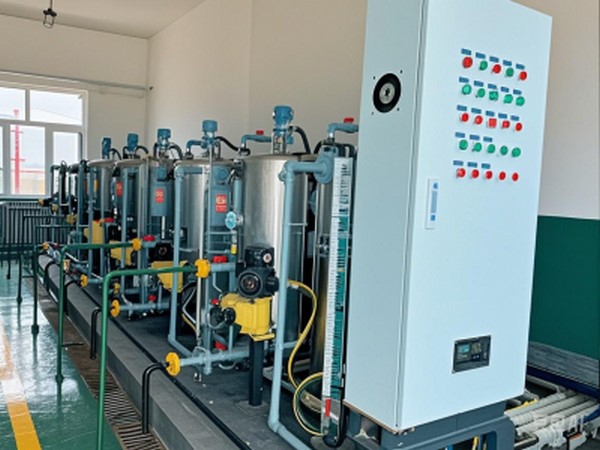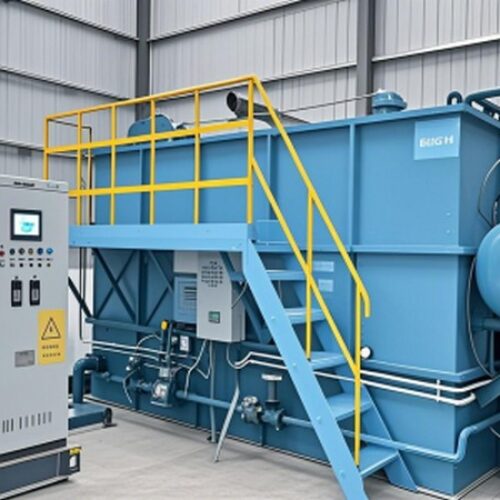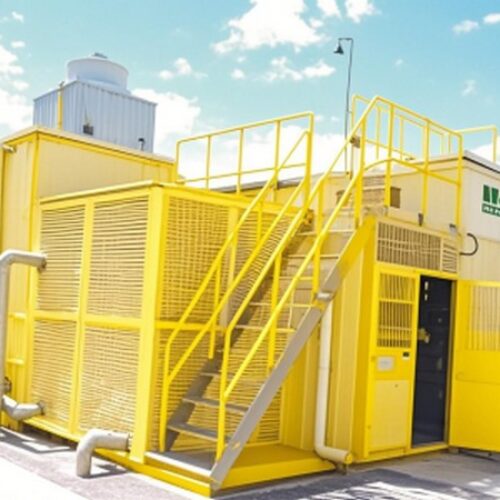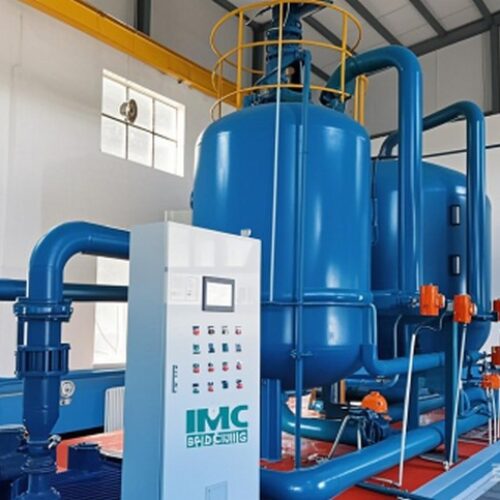Deskripsi
Overview of Integrated Chemical Dosing Systems:
An integrated chemical dosing system is a compact and automated solution designed to store, mix, and inject chemicals into the water treatment process. It is widely used in oil and gas fields to treat produced water, control scaling, corrosion, and bacterial growth, and improve water quality.
Key Components:
An integrated chemical dosing system typically includes the following components:
1. Chemical Storage Tanks:
- Used to store liquid or powdered chemicals such as scale inhibitors, corrosion inhibitors, biocides, coagulants, and flocculants.
- Made of materials resistant to chemical corrosion, such as polyethylene or stainless steel.
2. Mixing Units:
- Used to prepare chemical solutions by dissolving powdered chemicals or diluting concentrated liquids.
- Equipped with agitators to ensure uniform mixing.
3. Dosing Pumps:
- Precision pumps (e.g., diaphragm pumps or peristaltic pumps) that deliver chemicals at controlled rates.
- Can be adjusted to meet specific dosing requirements based on water quality and flow rates.
4. Control System:
- An automated control system (e.g., PLC-based) that monitors and adjusts chemical dosing based on real-time data.
- Can be integrated with sensors and flow meters for precise control.
5. Piping and Injection Points:
- Piping networks that transport chemicals from the dosing system to the treatment process.
- Injection points are strategically located to ensure proper mixing and distribution of chemicals.
6. Safety Features:
- Includes leak detection, overflow prevention, and alarms to ensure safe operation.
Working Principle:
The integrated chemical dosing system operates as follows:
- Chemical Preparation: Chemicals are mixed and prepared in the storage tanks.
- Dosing Control: The control system calculates the required dosing rate based on water quality parameters (e.g., pH, conductivity, or flow rate).
- Chemical Injection: Dosing pumps inject the chemicals into the water treatment process at the specified rate.
- Monitoring and Adjustment: Sensors and feedback mechanisms continuously monitor the process and adjust dosing as needed.
Applications in Oil and Gas Field Water Treatment:
Integrated chemical dosing systems are used for:
- Scale Inhibition: Preventing the formation of scale deposits in pipelines and equipment.
- Corrosion Control: Protecting metal surfaces from corrosion caused by aggressive water chemistry.
- Bacterial Control: Eliminating bacteria and preventing biofouling.
- Coagulation and Flocculation: Enhancing the removal of suspended solids and oil droplets.
- pH Adjustment: Neutralizing acidic or alkaline water to meet discharge standards.
Advantages:
- Compact Design: Saves space and simplifies installation.
- Automation: Reduces manual intervention and ensures consistent dosing.
- Precision: Delivers chemicals accurately, minimizing waste and optimizing treatment efficiency.
- Versatility: Can handle multiple chemicals and adapt to varying water treatment needs.
- Safety: Incorporates safety features to prevent accidents and chemical spills.
Challenges:
- Chemical Compatibility: Requires careful selection of materials to avoid chemical corrosion.
- Maintenance: Regular maintenance of pumps, sensors, and tanks is necessary to ensure reliable operation.
- Initial Cost: Higher upfront investment compared to manual dosing systems.
Summary:
Integrated chemical dosing systems are essential in oil and gas field water treatment for their ability to deliver chemicals accurately and efficiently. They enhance water treatment processes, protect infrastructure, and ensure compliance with environmental regulations. Their compact, automated, and versatile design makes them a valuable solution for modern water treatment challenges.





Ulasan
Belum ada ulasan.